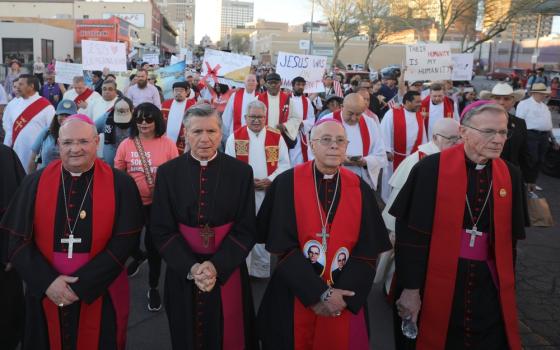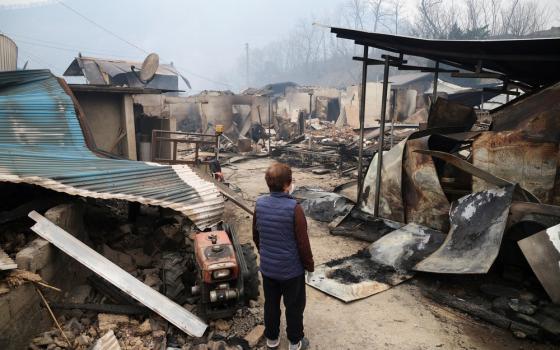
Catholics in Kansas City, Mo., learned in May something that Nicholas Cafardi has known for some time: “A review board” -- the confidential consultative body each bishop is supposed to have for advice on cases of sexual abuse by clergy -- “is only as good as the cases a bishop puts before them.”
And the bishops have “a bit of wiggle room” about when the review boards are to be used, said Cafardi, who was a member of the original National Review Board established by the U.S. bishops in 2002.
Jim Caccamo, who serves on the review board of the Kansas City-St. Joseph diocese, told NCR that he knew nothing about Fr. Shawn Ratigan, the priest arrested on child pornography charges, until he read about it in the newspaper, even though Finn had removed the priest from parish ministry in December.
Finn acknowledged at a press conference May 27 that he did not inform his diocesan review board of the concerns presented about Ratigan. His spokeswoman, Rebecca Summers, explained that the bishops’ 2002 charter says diocesan review boards should be convened only “when you have a specific allegation of abuse” by a priest or other person in diocesan ministry.
“We did not have that,” Summers said. “The charter did not address a situation such as this.”
Yet the associate director of the U.S. bishops’ Office of Child and Youth Protection told NCR that while child pornography is not specifically mentioned in the 2002 charter, it is covered in it as a “violation against the sixth commandment.”
“If anybody’s in possession of it or knows somebody in possession of it, it needs to be reported,” said Mary Jane Doerr, who said she did not have information on the specifics of the Kansas City case.
At the May 27 press conference, Finn said that he had asked the board, as a result of this case, to “expand its role in receiving and evaluating reports of misconduct with children.”
In February, Ana Maria Catanzaro, chair of the Philadelphia archdiocese’s review board, also learned that archdiocesan officials had been selective in the cases they had presented to the board. She learned this from a grand jury report that said 37 priests were in ministry in that archdiocese despite credible allegations of abuse.
Following that report, the former secretary of clergy in the archdiocese was arrested for failing to protect children from dangerous priests. Cardinal Justin Rigali also placed 21 other priests on administrative leave March 8 pending review of allegations of abuse.
Writing about the experience in Commonweal, Catanzaro said the Philadelphia board “had been advised only about allegations previously determined by archdiocesan officials to have involved the sexual abuse of a minor -- a determination we had been under the impression was ours to make.”
According to Cafardi, while the U.S. bishops’ 2002 Charter for the Protection of Children and Young People mandates that each diocese have a review board to act “as a confidential consultative body to the bishop,” the charter only specifies that the functions of the individual boards “may” include advising the bishop, reviewing diocesan policies, and offering advice on cases of sexual abuse by clergy.
That language, said Cafardi, is what gives the bishops that “bit of wiggle room.” But Cafardi quickly added: “It seems to me if [a bishop] sets up a board and gives it this task, he can’t change the task midstream.”
Cafardi is a canon and civil lawyer and dean emeritus of Duquesne University School of Law in Pittsburgh.
“A review board is only as good as the cases a bishop puts before them,” he said. “The point of the review boards was that the bishops realized that their own judgment in these matters may not be sufficient. They’re to help the bishop. You can’t help somebody who doesn’t ask for your help.”
Beyond questions of the review board structure, Finn’s delay in notifying others about Ratigan’s troubles may have also violated norms in canon law, Cafardi said.
Changes made in May 2010 to the apostolic letter Sacramentorum Sanctitatis Tutela identified “the acquisition, possession, or distribution by a cleric of pornographic images of minors under the age of fourteen” as a “grave offense” subject to the Vatican’s Congregation for the Doctrine of the Faith.
That means, Cafardi said, that as soon as Finn had knowledge of the material on the priest’s computer “he was supposed to notify” that congregation.
“I wonder if he did that,” Cafardi said.




